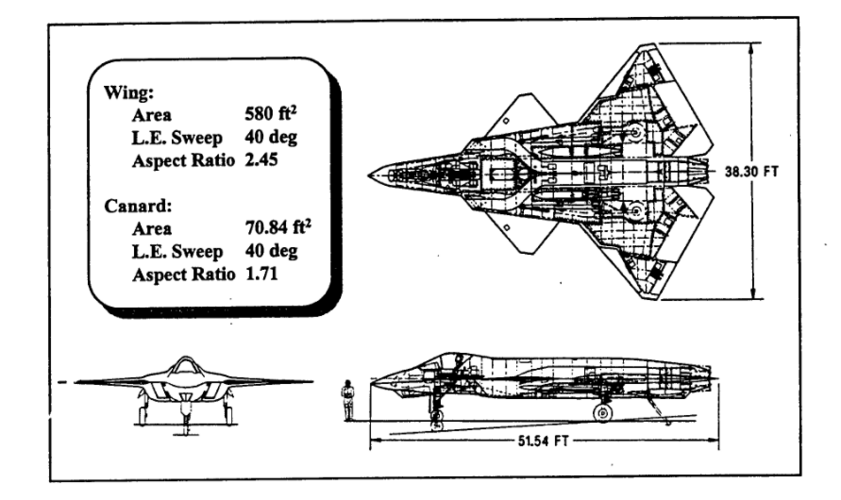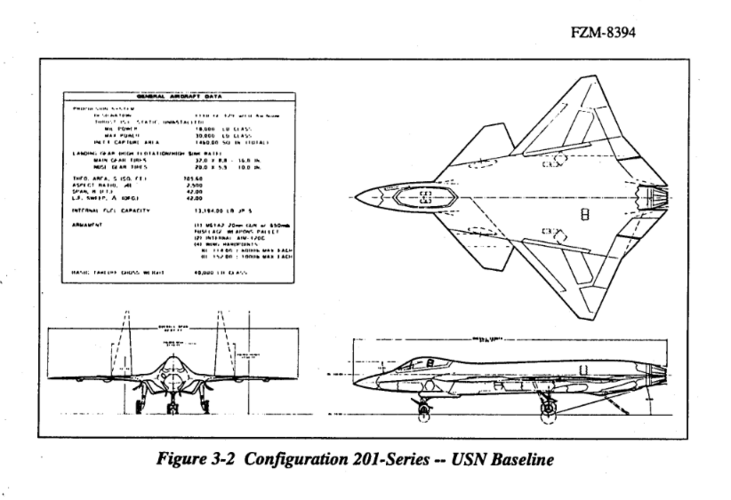- Joined
- 16 January 2015
- Messages
- 710
- Reaction score
- 2,506
Apparently a follow-on study conducted by Boeing based on the lessons learned through the ICE (Innovative Control Effectors) program.
Found in Nonlinear Control Of Fighter Aircraft, June 1999 by Kevin A. Wise, Jack L. Sedwick and Yutaka Ikeda (pdf linked in attachments below).
Boeing TAFA 3 view:

vs. ICE configuration 201 baseline:

The only other mention I could find of the Boeing TAFA on dtic.mil comes from Nonlinear Control Systems, by Christopher L Byrnes and Alberto Isidori.
Found in Nonlinear Control Of Fighter Aircraft, June 1999 by Kevin A. Wise, Jack L. Sedwick and Yutaka Ikeda (pdf linked in attachments below).
The Boeing Tailless Advanced Fighter Aircraft (TAFA), illustrated in Figure A.1, is a conceptual design of an advanced fighter configuration which blends an extensive suite of conventional and innovative control effectors to achieve high agility in a low observable design. The TAFA is a single engine, single seat fighter designed for air to air or air to ground missions.
Boeing TAFA 3 view:

vs. ICE configuration 201 baseline:

The only other mention I could find of the Boeing TAFA on dtic.mil comes from Nonlinear Control Systems, by Christopher L Byrnes and Alberto Isidori.
In September of 2001 Dr. Byrnes, Gilliam and Isidori began a collaborative project on control of UAV, UCAV and tailless aircraft with Dr. Yutaka Ikeda Automatic Air Collision Avoidance Systems, Phantom Works, The Boeing Company.
The purpose of the project was to transition their prior work, and recent extensions thereof, on robust output regulation to flight control technologies for UCAVs.
Six technical meetings, were held on: September 15, 2001; October 15, 2001; November 8, 2001; March 7, 2002; April 19, 2002; and May 24, 2002. These working meetings focused on transitioning this work to flight control methodologies for take-off and landing of the Boeing TAFA model, with the transition of that work to UAVs and UCAVs being done by Boeing engineers. This project resulted in the publication of one paper on the suppression of harmonic disturbances in the measured roll and yaw rates in UCAVs:
